Workforce Management
Smart planning, efficient operations, and better control over your workforce.
Workforce Management helps plan, track, and optimise employee productivity—covering shifts, attendance, tasks, and staffing needs.
What is Workforce Management?
Workforce Management is all about helping organisations plan, track, and improve daily work. It brings together HR processes, time tracking, performance insights, and analytics into one system so businesses can stay flexible, productive, and efficient.
 HR practices
HR practices Time tracking
Time tracking Performance monitoring
Performance monitoring Data analytics
Data analytics
 Aligned workforce deployment
Aligned workforce deployment Effective skill use
Effective skill use Minimised operational gaps
Minimised operational gaps
 Data-driven decisions
Data-driven decisions
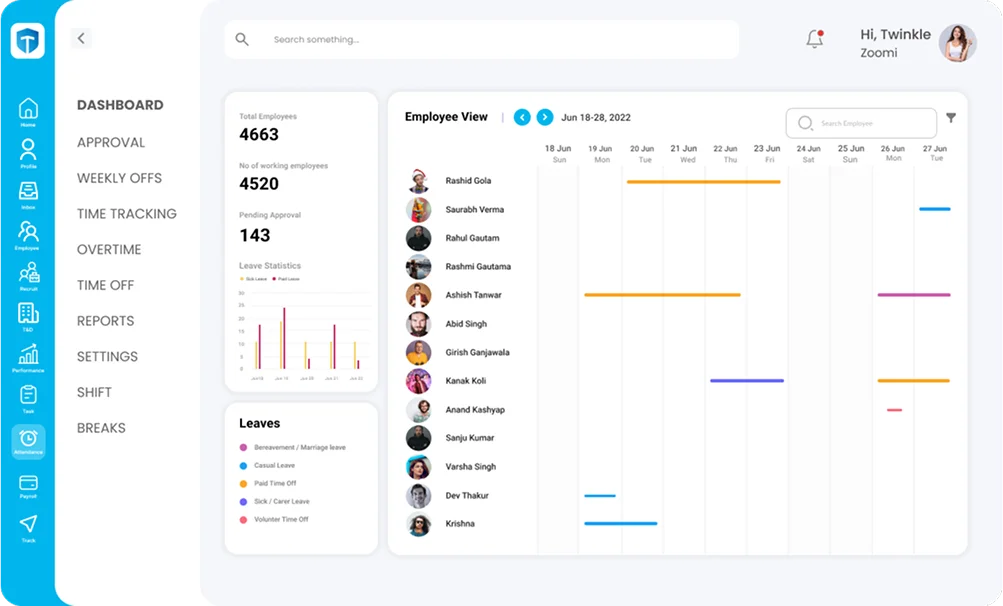
Why Is Workforce Management Important?
Without a solid plan for managing people and schedules, businesses can end up with delays, wasted resources, and rising labour costs. Workforce Management offers a smarter way to keep everything running smoothly and efficiently.
 Accurate staffing forecasts
Accurate staffing forecasts Salaries paid on timeLess idle time and overstaffing
Salaries paid on timeLess idle time and overstaffing
 Better shift and roster planning
Better shift and roster planning
 Improved task tracking
Improved task tracking Aligned workforce goals
Aligned workforce goals
 Greater employee satisfaction
Greater employee satisfaction
Key Components of Workforce Management
Shift Planning and Scheduling
Attendance and Time Tracking
Task and Productivity Management
Performance Insights
Leave and Availability Integration
Field and Remote Workforce Tracking
Shift Planning and Scheduling
Workforce Management tools make scheduling simpler, more organised, and better suited to your team’s needs.
 Rosters based on workload and availability
Rosters based on workload and availability
 Roles and responsibilities across teams
Roles and responsibilities across teams
 Rotating or fixed shifts
Rotating or fixed shifts
 Conflict-free, non-overlapping schedules
Conflict-free, non-overlapping schedules
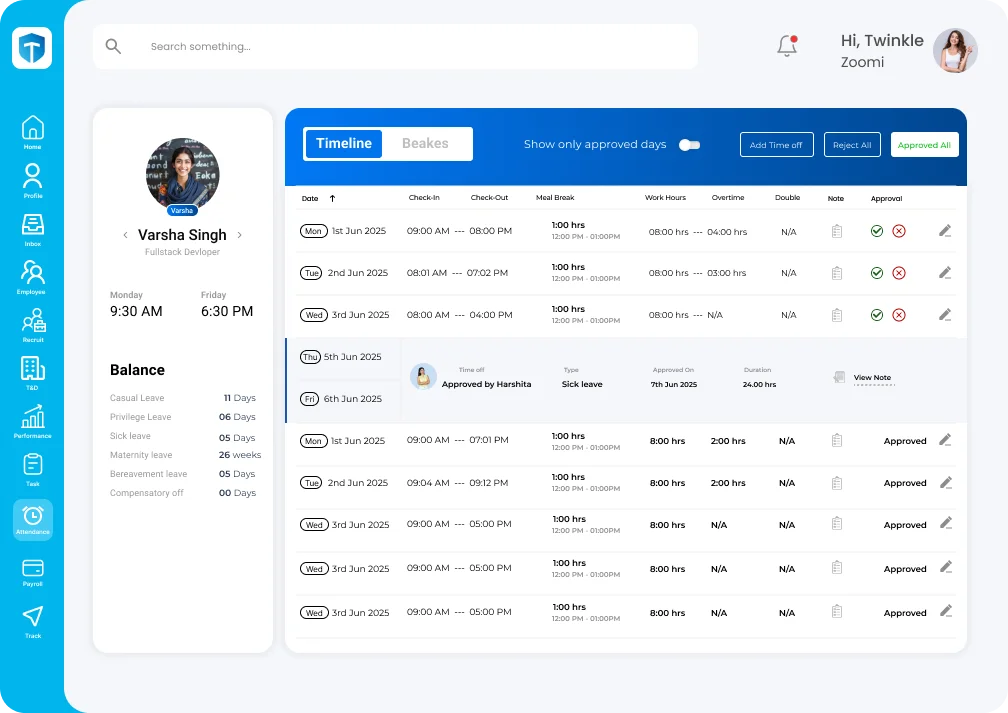
Attendance and Time Tracking
Workforce Management systems simplify attendance tracking, giving you a clear picture of daily activity and supporting smooth operations.
 Biometric, mobile, or web-based attendance
Biometric, mobile, or web-based attendance
 Real-time presence updates
Real-time presence updates
 Late arrivals, early exits, overtime
Late arrivals, early exits, overtime
 Payroll and leave integration
Payroll and leave integration
Task and Productivity Management
Keep work organised and flowing smoothly by tracking how tasks are assigned and completed across teams. Workforce Management tools help you see the big picture and keep everyone on track.
 Tasks by department or project
Tasks by department or project
 Targets and deadlines
Targets and deadlines
 Output measured against time
Output measured against time
 Visibility into workload distribution
Visibility into workload distribution
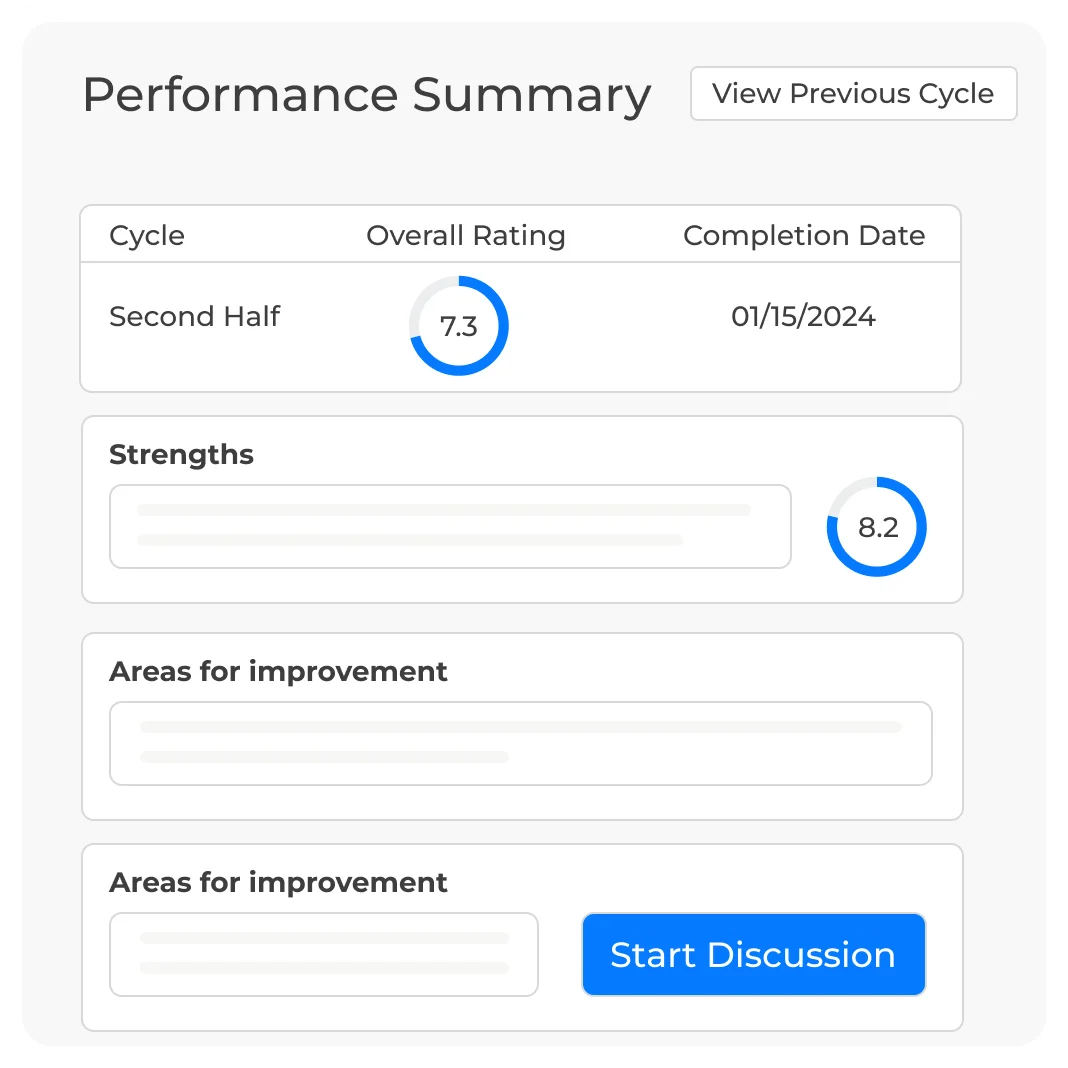
Performance Insights
Get a clear view of how your team is performing with real-time dashboards and reports. Workforce Management tools help you spot trends, find gaps, and keep productivity on track.
 Performance summaries
Performance summaries
 Activity logs
Activity logs
 Shift or team comparisons
Shift or team comparisons
 KPI alerts
KPI alerts
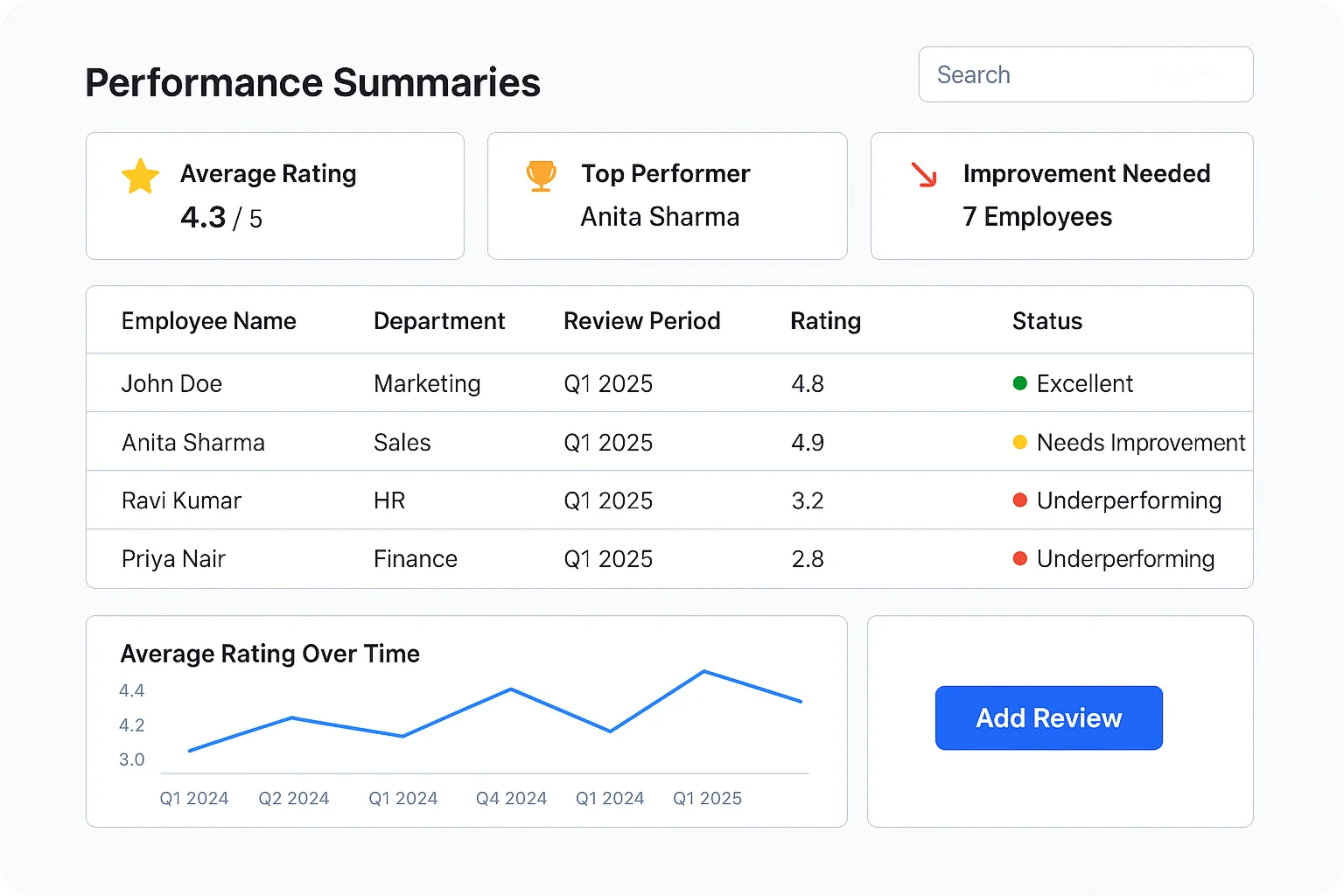
Leave and Availability Integration
Bring attendance, leave, and holiday details together to make scheduling easier and more reliable. Workforce Management tools help you plan better and keep operations running smoothly.
 Automatic updates from leave approvals
Automatic updates from leave approvals
 Team availability visibility
Team availability visibility
 Dynamic shift adjustments to prevent understaffing
Dynamic shift adjustments to prevent understaffing
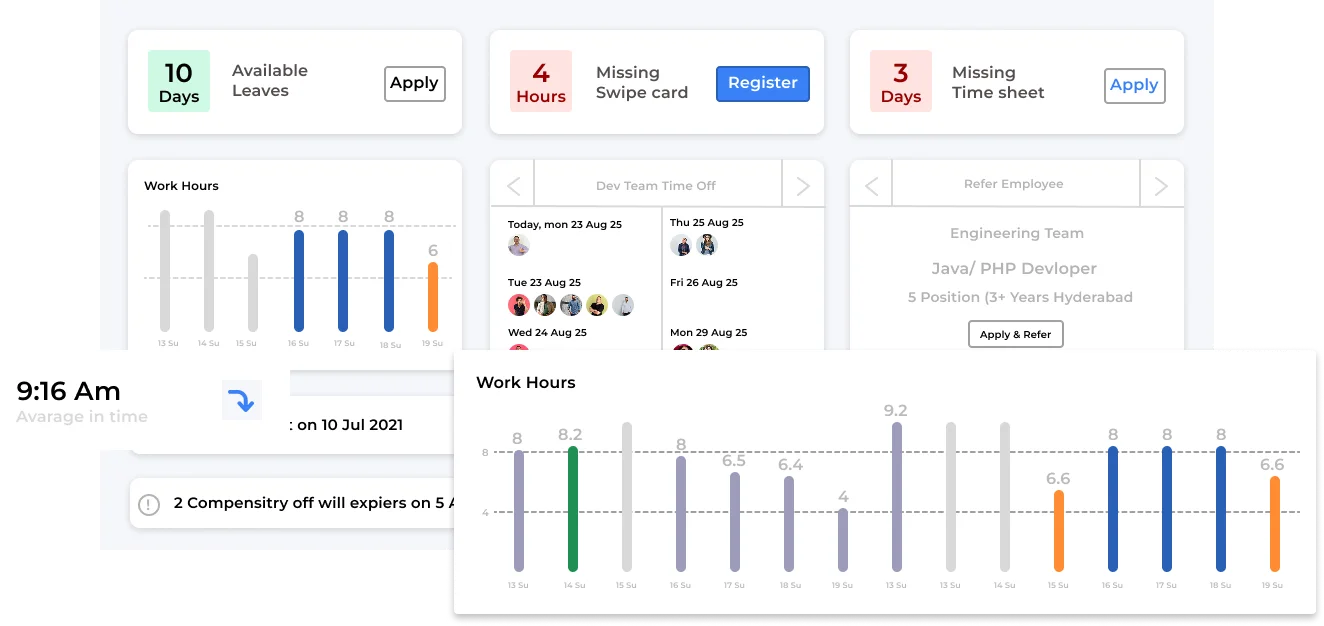
Field and Remote Workforce Tracking
Perfect for teams on the move, sales staff, or those working at client sites. Workforce Management tools make it easy to track and manage work no matter where it happens.
 Geo-tagged check-ins and check-outs
Geo-tagged check-ins and check-outs
 Location-based shift assignments
Location-based shift assignments
 Travel logs and field visit summaries
Travel logs and field visit summaries
Benefits of Workforce Management
Workforce Management brings real benefits to your business by improving how you plan, track, and support your teams every day. It helps you meet demand, control costs, and keep your people engaged and informed.
 Matching schedules to business needs
Matching schedules to business needs Live visibility of workforce activities
Live visibility of workforce activities Cost planning to reduce overstaffing and overtime
Cost planning to reduce overstaffing and overtime
 Fair and transparent scheduling
Fair and transparent scheduling Data-driven staffing decisions
Data-driven staffing decisions Tracking hours and breaks for compliance
Tracking hours and breaks for compliance
Who Uses Workforce Management Systems?
Workforce Management solutions are valuable for many industries that need reliable scheduling, tracking, and coordination of their teams.
Key Considerations Before Choosing Workforce Management System
When you’re planning to adopt a Workforce Management solution, it’s important to make sure it really suits the way your organisation works. Look for features that make daily operations smoother, support your teams wherever they are, and help you grow over time.
 Shift flexibility
Shift flexibility Integration with HR tools
Integration with HR tools
 Mobile compatibility
Mobile compatibility Custom rules and logic
Custom rules and logic
 Actionable analytics
Actionable analytics Scalability for future growth
Scalability for future growth
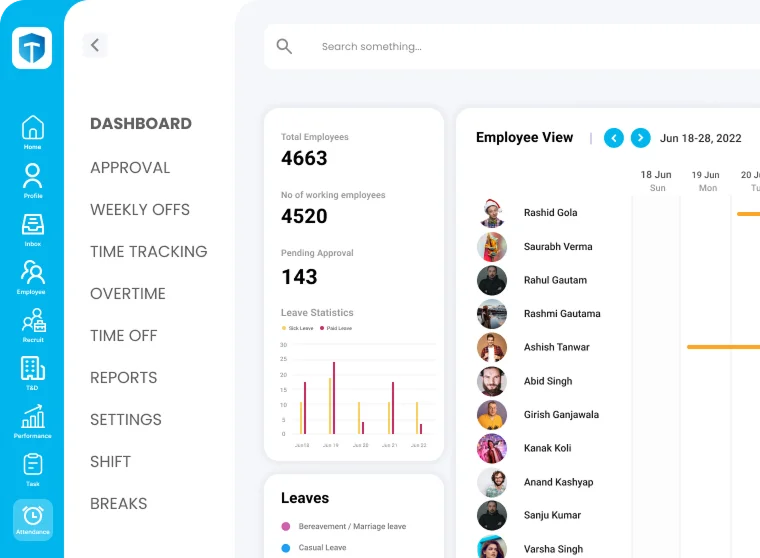
FAQs
01.What’s the difference between HRMS and Workforce Management?
HRMS focuses on people-related records, policies, and lifecycle management. Workforce Management focuses on day-to-day employee productivity, scheduling, and attendance.
02.Can WFM systems handle shift swaps and last-minute changes?
Yes. Most systems allow shift changes, reassignments, and approvals based on availability and policy rules.
03. How does WFM help with cost savings?
By ensuring optimal staffing, reducing idle time, and avoiding unnecessary overtime costs
04. Is workforce tracking possible for remote or field staff?
Yes. Geo-tagged check-ins and mobile updates help track attendance and task progress in real time.
05. Can WFM systems help manage compliance?
Absolutely. These systems track hours worked, weekly offs, breaks, and rest periods, which helps with labour law compliance.






